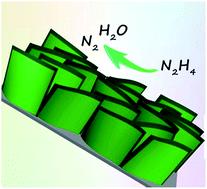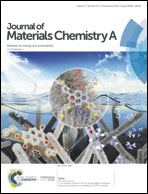Sulfurization-induced edge amorphization in copper–nickel–cobalt layered double hydroxide nanosheets promoting hydrazine electro-oxidation†
Abstract
The electrocatalytic hydrazine oxidation reaction (HzOR) has drawn extensive attention due to its high energy conversion efficiency and wide applications in hydrazine-assisted water splitting and direct hydrazine fuel cells (DHFC). In this study, a ternary copper–nickel–cobalt layered double hydroxide (CuNiCo LDH) nanosheet array catalyst with sulfurization-induced edge amorphization was fabricated as a highly efficient electrocatalyst for HzOR. The amorphous species at the edge region remarkably enrich the coordinatedly unsaturated metal atoms, which are catalytically active for the electro-oxidation reactions. In addition, the optimal ratio of ternary metal ions further modulates the electronic structure and optimizes the HzOR kinetics, thereby realizing improved catalytic activity. With the combined merits of enriched active species, large surface area, enhanced charge transfer behavior, and favorable reaction kinetics as well as its robust microstructure, a synergistically optimized HzOR catalyst with high activity and superior durability was achieved, which could be applied for hydrogen production via hydrazine-assisted water splitting and for generating electricity from DHFC.



 Please wait while we load your content...
Please wait while we load your content...